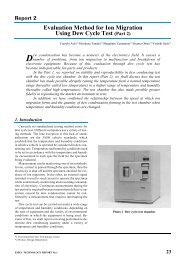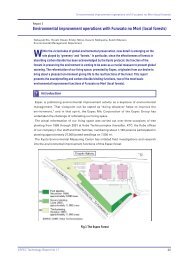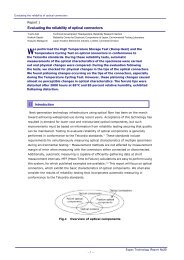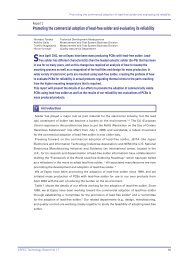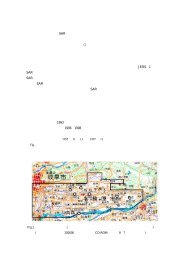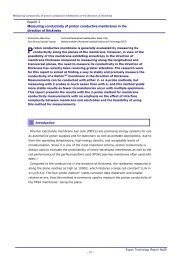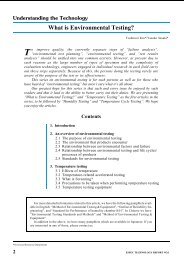download
download
download
Create successful ePaper yourself
Turn your PDF publications into a flip-book with our unique Google optimized e-Paper software.
Measuring Conductivity of Proton Conductive Membrane in the direction of thickness, partⅡ:<br />
using the 4-probe method in the direction of thickness<br />
Fig.1 Construction of MEA specimen for the 4-probe method in the direction of<br />
thickness<br />
2-3 Conductivity measurement of MEA specimens<br />
A specimen fixed to the measuring cell was placed inside a temperature and humidity chamber<br />
under constant temperature and humidity (30℃, 30-90%rh). AC impedance measurements<br />
were taken using a computer-controlled impedance gain/phase analyzer and electrochemical<br />
interface measuring system, and Cole-Cole (Z’-Z’’) and Bode (log|Z|-log Frequency and<br />
theta-log Frequency) plots were obtained. The frequency limits of the sinusoidal signals were<br />
typically set between 5MHz and 0.01Hz, with an oscillation of 10 mV.<br />
With test membrane bulk resistance R read out according to the center of gravity of the<br />
concentrated points on Cole-Cole plot, conductivity was calculated using the following formula.<br />
L<br />
=<br />
R ⋅ A<br />
σ … (1)<br />
Where σ is conductivity (S cm -1 ), R is resistance (Ω), L is test membrane thickness or interval<br />
between two electric potential sampling electrodes (cm), and A is electrode area (cm 2 ).<br />
Equipment connection for the impedance gain/phase analyzer (IGPA), the electrochemical<br />
interface (EI) and the membrane/electrode assembly (MEA) was shown in Fig.2 for 4-probe<br />
conductivity measurements in the thickness direction used in this report.<br />
- 5 -<br />
Espec Technology Report No.23



